13 Most Famous Johnson Brothers Patterns Ever Made
Johnson Brothers patterns have been a favorite among collectors and families for many years. The company first began producing tableware in the late 1800s, and their designs quickly gained attention. Over time, they released a wide variety of patterns, ranging from floral styles to classic transferware scenes. These patterns often bring a sense of nostalgia and charm to any table. With so many designs available, there is something that appeals to every taste.
This post may contain affiliate links, which helps keep this content free. Please read our disclosure for more info.
Johnson Brothers Old Britain Castles
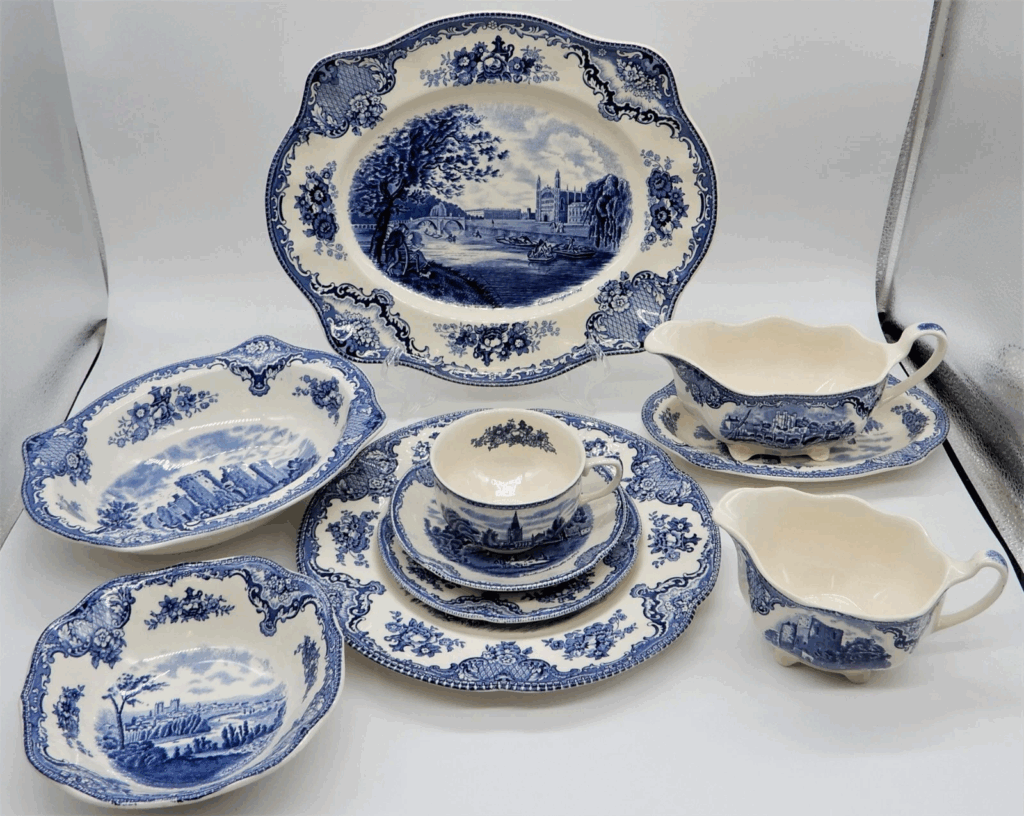
Old Britain Castles was first released in 1930 and remains one of the most collected Johnson Brothers patterns. The design features historic British castles with detailed scenes and decorative borders. It was commonly produced in pink, blue, brown, and multicolor variations. Collectors often use it for display, and complete sets are still found in homes worldwide. A full dinner plate in good condition usually sells for around $20 to $40 today.
This pattern was produced for decades, making it relatively common yet highly desirable. The wide variety of serving pieces makes it popular for building complete sets. Teapots, tureens, and platters tend to be more valuable, with some reaching $200. It is a favorite among collectors who enjoy English historical designs. Many see it as a classic symbol of the Johnson Brothers tradition.
Johnson Brothers Friendly Village
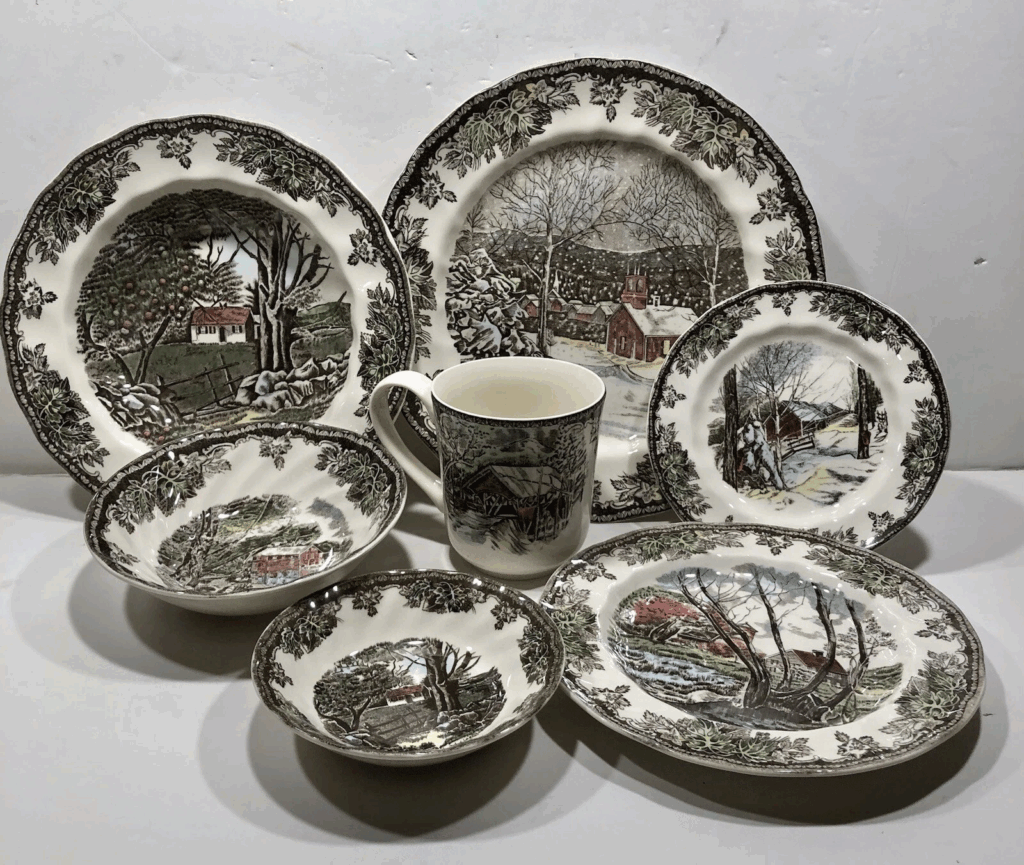
Friendly Village was released in 1953 and became one of the company’s most beloved designs. The pattern depicts charming rural English scenes, including cottages, mills, and village squares. It was made in green, brown, and red transferware with seasonal themes. Friendly Village pieces are still widely used during holiday gatherings. Dinner plates typically range from $15 to $30 each on the current market.
This collection is known for its nostalgic winter and autumn images. Many families pass these sets down as heirlooms. Serving platters and covered dishes often command higher values, sometimes $150 or more. Collectors enjoy mixing individual pieces to complete sets over time. Its seasonal look makes it especially appealing for festive dining.
Johnson Brothers Windsor Ware
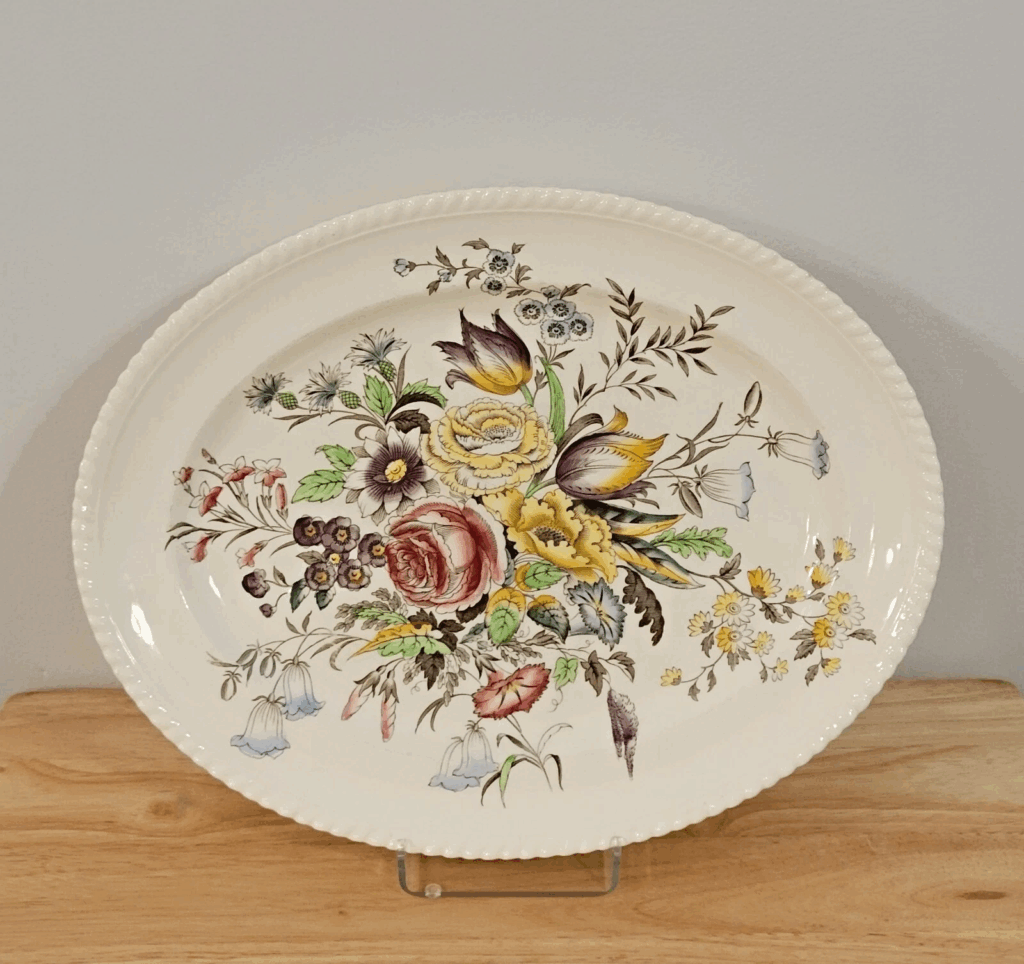
Windsor Ware was introduced in the 1930s and features colorful floral motifs. The pattern includes roses, peonies, and other garden blooms with a cream background. It became very popular for everyday table settings. The cheerful designs gave it a warm and inviting appeal. Plates in this pattern usually sell for $10 to $25 today.
Collectors value Windsor Ware for its wide selection of shapes and serving items. Some limited edition colors or rare shapes can sell for $100 or more. This pattern is often seen in antique shops due to its long production run. It remains a good entry point for new collectors. Many choose it for its bright, decorative style.
Johnson Brothers Rose Chintz

Rose Chintz was first released in 1930 and became a Johnson Brothers bestseller. The pattern shows clusters of pink roses and other flowers against a cream background. It is both elegant and practical, often found in large sets for family dining. The design has a soft English country charm. A dinner plate typically sells for $15 to $35 in today’s market.
The pattern was produced for decades, making it widely available but still collectible. Cups, saucers, and serving bowls are especially sought after. Large serving pieces can sometimes reach values of $100 or more. Rose Chintz remains popular among those who enjoy floral china. Many collectors admire its classic appeal and versatile style.
Johnson Brothers Regency
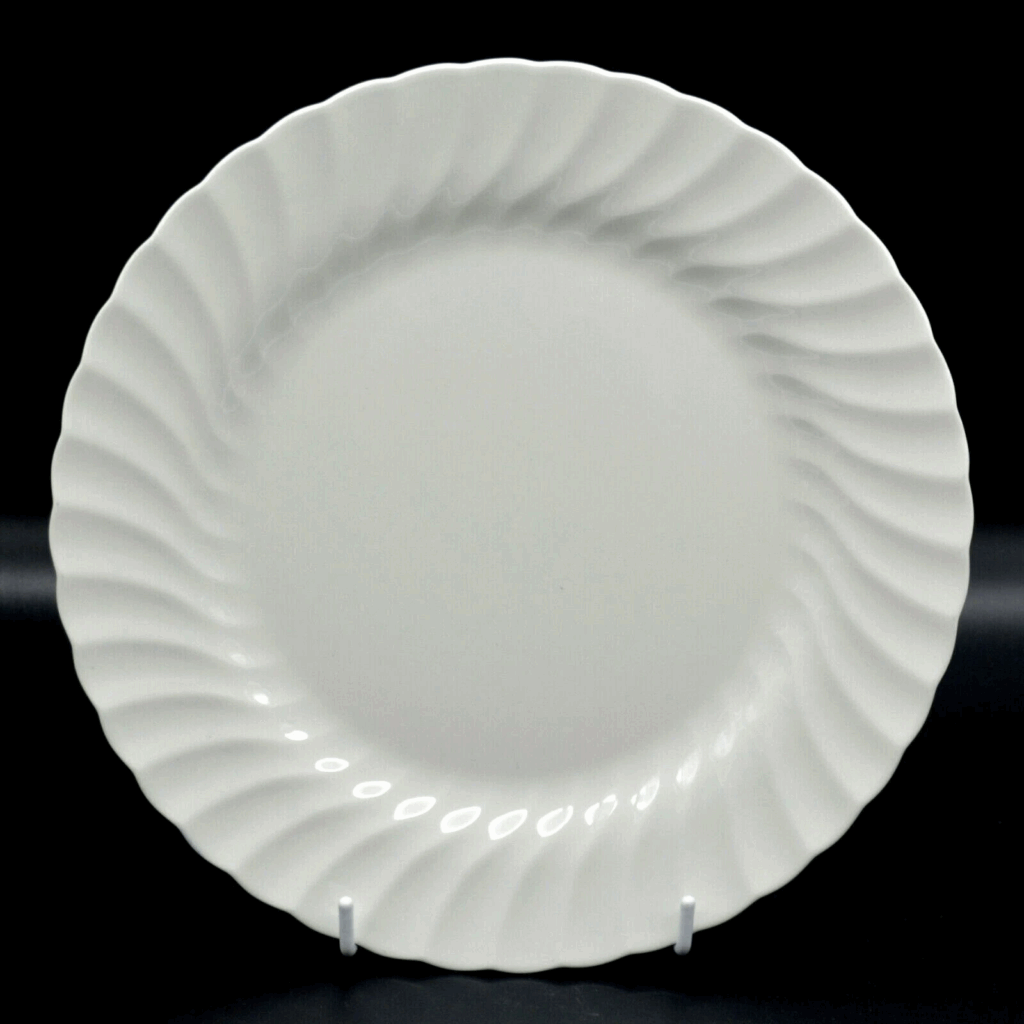
The Regency pattern was introduced in the 1960s and is known for its simple red transferware design. It features floral borders and classic English motifs. The clean style made it popular for both casual and formal dining. The red pattern stands out compared to the more common blue and brown designs. A dinner plate is valued at about $12 to $25 today.
Collectors enjoy the bright red hue, which makes Regency a distinctive choice. It was produced in a wide range of items, including teapots and platters. Complete tea sets in this pattern are especially prized, often selling for over $150. Many appreciate its balance between decorative detail and everyday usability. It remains a popular option for display collections.
Johnson Brothers Heritage White
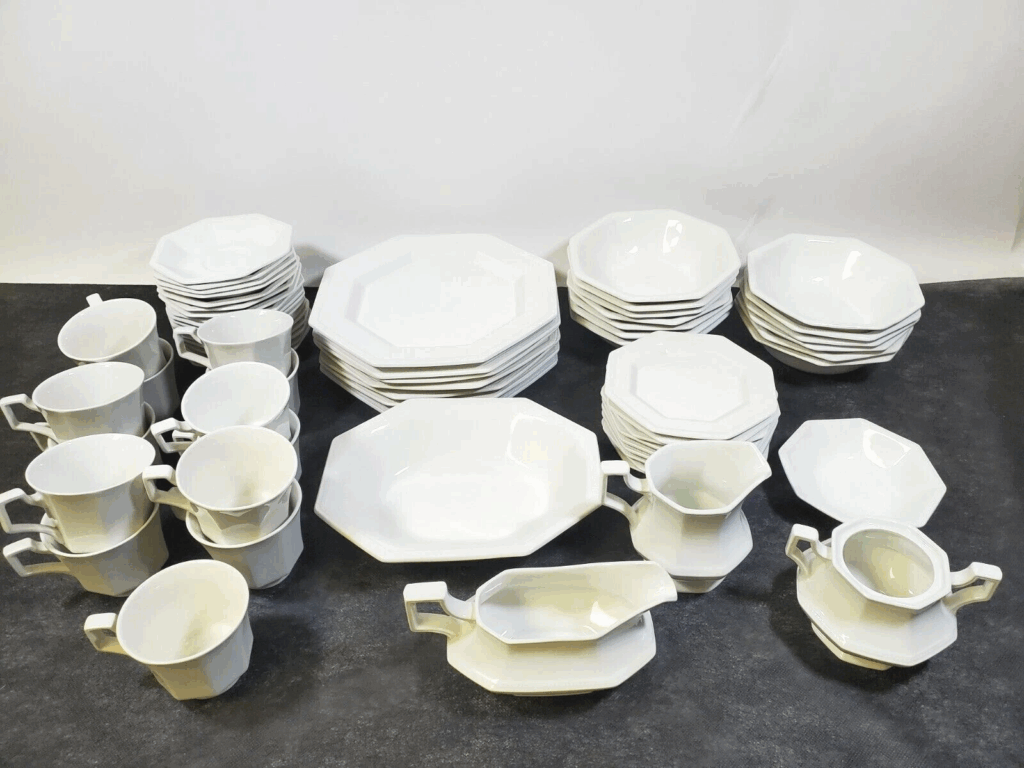
Heritage White was released in 1974 and is valued for its simplicity. Unlike many other Johnson Brothers patterns, it is plain white with embossed edging. This allowed it to blend easily with other dinnerware collections. It was often chosen for weddings and formal occasions. A dinner plate usually sells for $8 to $18 today.
Although simple, Heritage White has remained popular due to its timeless design. Serving platters and bowls tend to bring higher prices, sometimes $50 or more. Its versatility makes it a reliable choice for both collectors and everyday use. Because it lacks color, it pairs well with patterned china. Many collectors keep it as a staple foundation piece.
Johnson Brothers Indian Tree
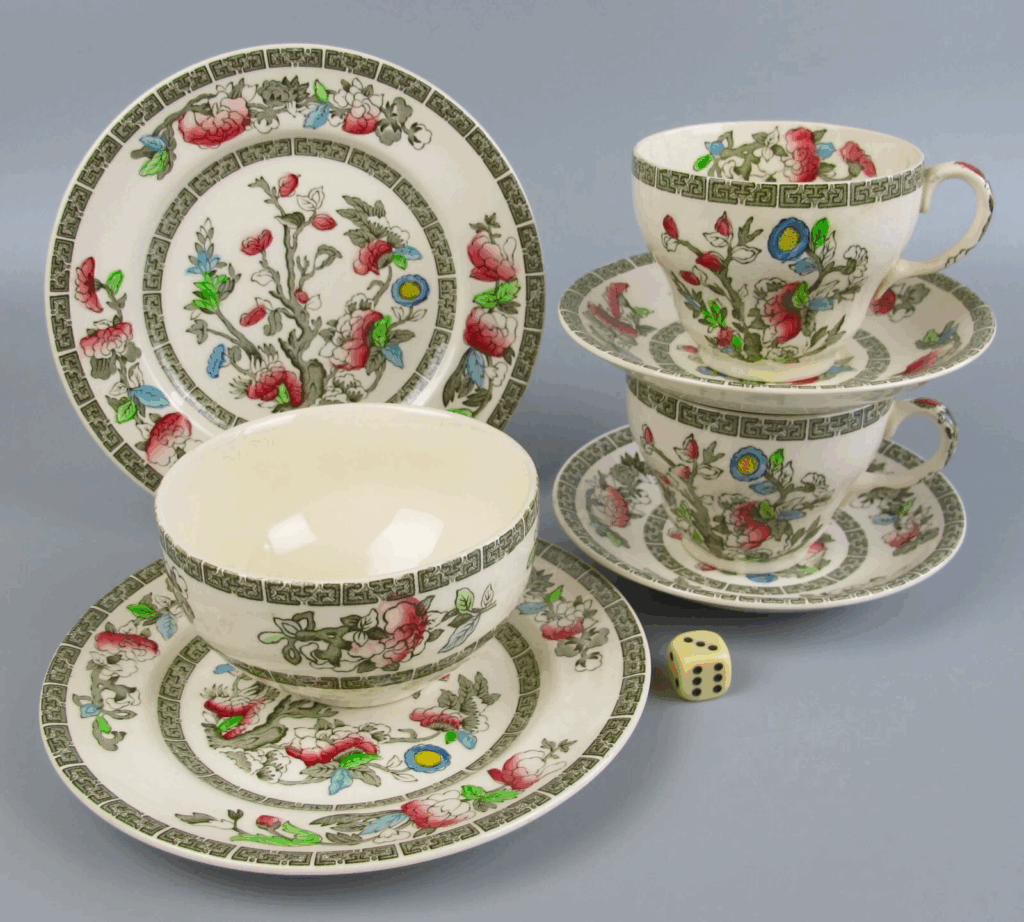
Indian Tree was first made in the 1910s and became one of the longest running Johnson Brothers designs. It shows stylized flowers and branches in bold colors with oriental influences. This pattern was popular in both England and the United States. Its detailed look gave dining tables a more formal style. Dinner plates typically sell for $20 to $40 today.
The pattern was produced in several versions, including multi-colored and simpler brown versions. Rare early pieces or large serving items can reach values of $200 or more. Collectors admire its historical appeal and long production history. Indian Tree is considered a staple in transferware collections. It remains one of the most iconic Johnson Brothers creations.
Johnson Brothers Mill Stream
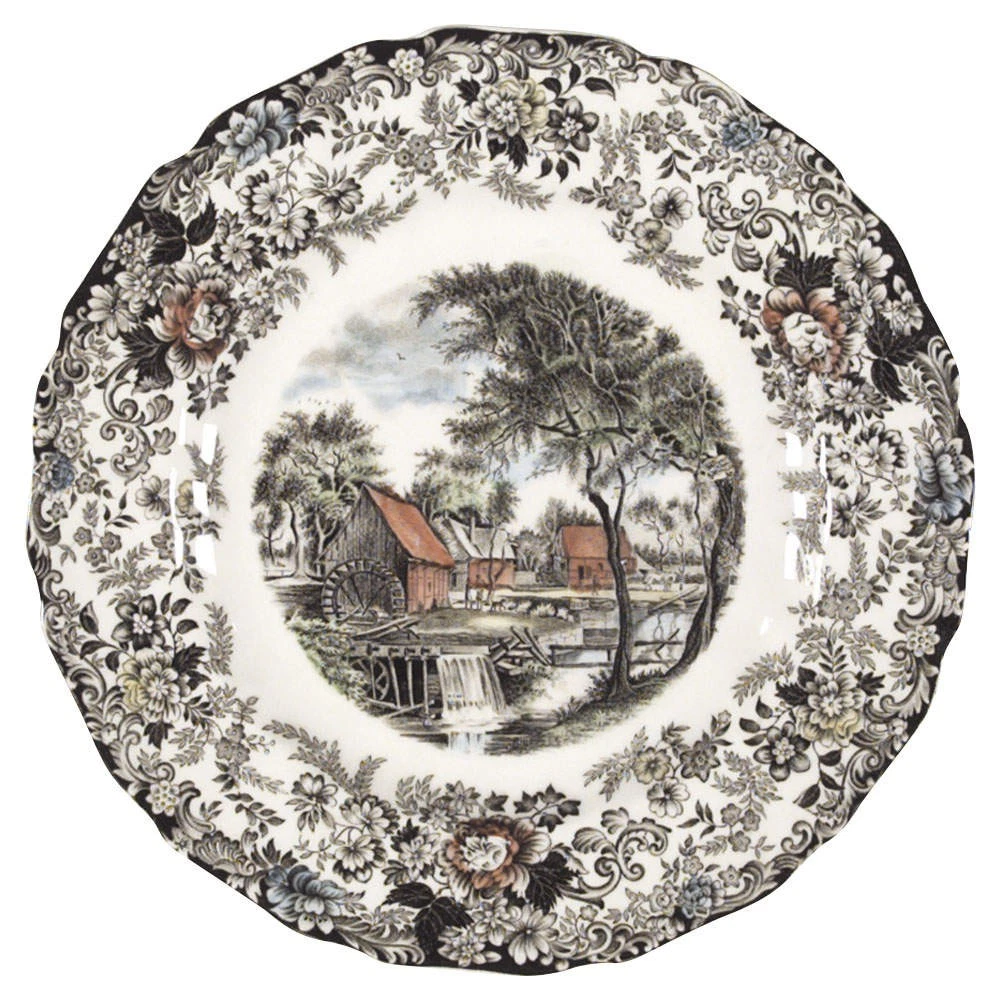
Mill Stream was introduced in the 1950s and features rural scenes with cottages and streams. The design reflects English countryside life, with soft brown and green colors. It was a popular choice for casual dining. Its detailed borders added depth to the overall look. Dinner plates today are valued between $15 and $30.
Collectors find Mill Stream appealing for its scenic quality. The pattern is especially popular among those who enjoy pastoral themes. Serving platters and covered vegetable dishes are among the more valuable items. Sets in excellent condition can fetch several hundred dollars. It remains an admired example of Johnson Brothers country designs.
Johnson Brothers Coaching Scenes
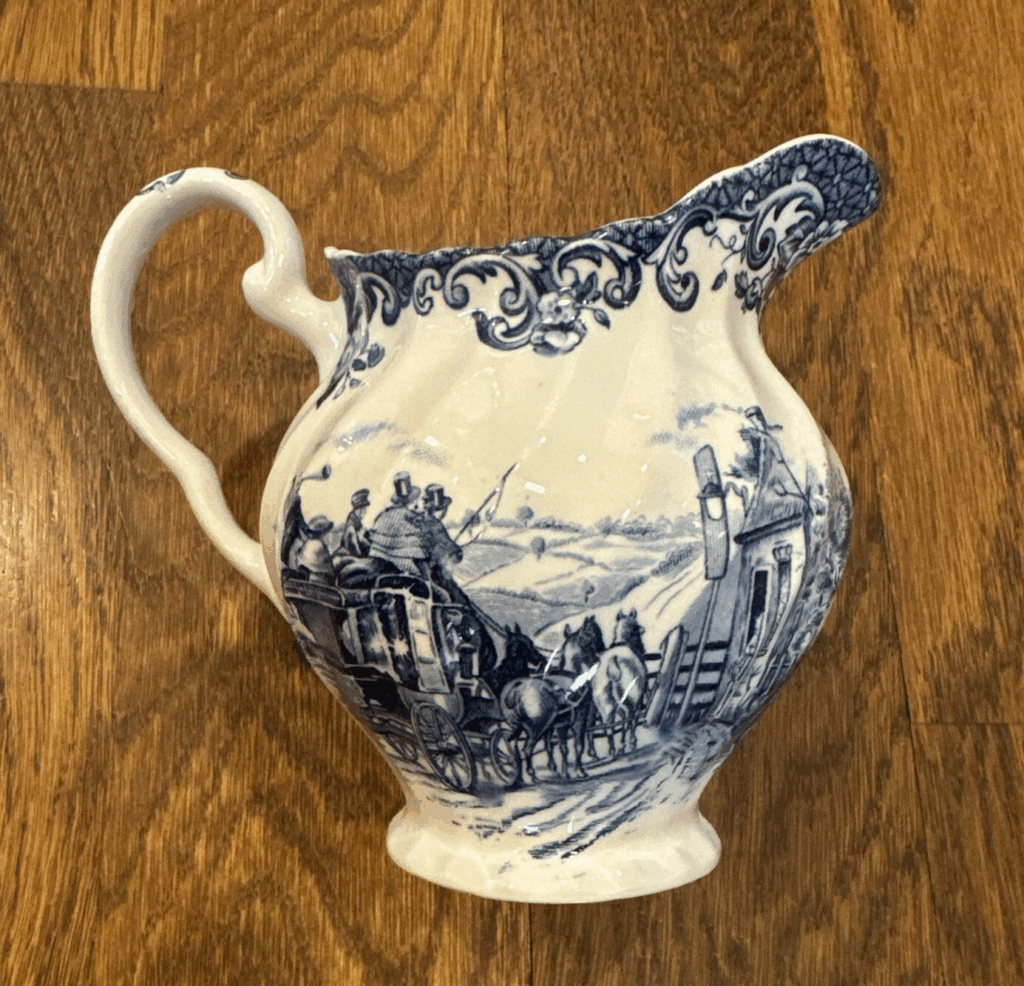
Coaching Scenes was first released in the 1950s and depicts horse-drawn carriages. The pattern was produced in blue, pink, and brown variations. It became very popular with collectors who enjoyed historic English themes. It is often used as display china due to its storytelling design. A dinner plate usually sells for $15 to $35 today.
This pattern includes many serving pieces, some of which are rare. Large tureens and teapots can sell for $200 or more. Its nostalgic imagery makes it highly collectible in both the UK and the US. Many families passed these sets down through generations. It continues to hold strong interest among collectors of historic tableware.
Johnson Brothers Summer Chintz
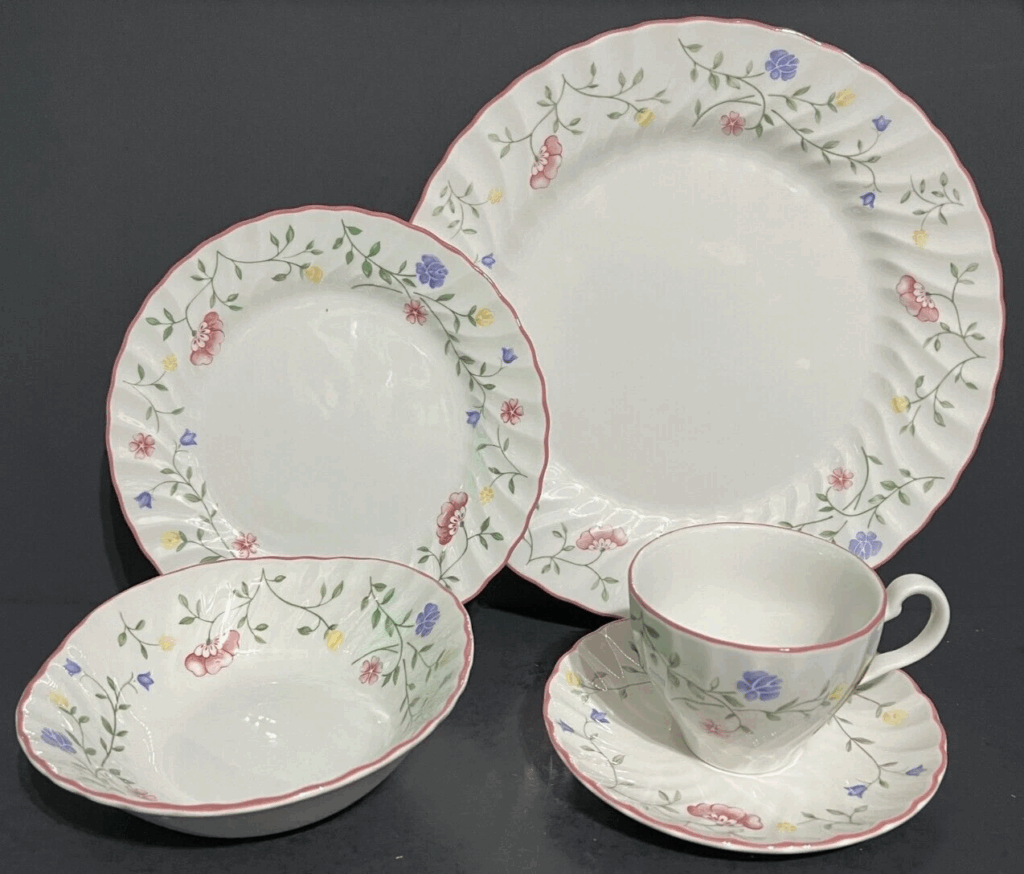
Summer Chintz was released in the 1980s and has a light, colorful design. It features pink, blue, and yellow flowers with a delicate border. Its cheerful appearance made it a popular casual dining pattern. It often brings a sense of charm to table settings. Dinner plates typically sell for $12 to $20 today.
This pattern is still widely available in secondhand markets. Collectors enjoy its modern yet classic look. Serving items and complete tea sets can sell for $100 or more. Many people who prefer floral china choose Summer Chintz for its lively style. It remains a favorite for those who like colorful designs.
Johnson Brothers Eternal Beau
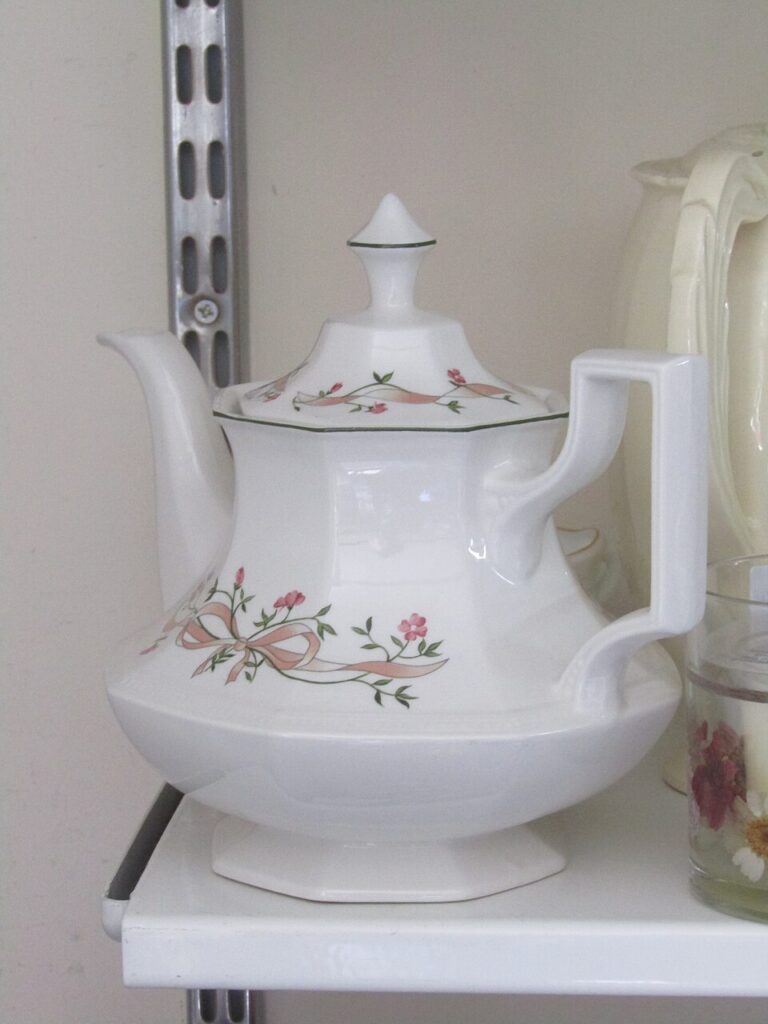
Eternal Beau was introduced in 1981 and quickly became one of Johnson Brothers’ top sellers. It features small pink flowers with green ribbons and bows. Its soft design made it popular for both daily and formal use. Many families purchased complete sets that are still in use today. Dinner plates generally sell for $10 to $18.
The pattern was produced for years, making it widely available but still collectible. Full dinner services with serving pieces can sell for $200 to $300. Eternal Beau is especially popular among collectors of late 20th-century china. It is admired for its delicate details and charming motifs. Many see it as a highlight of Johnson Brothers’ later production.
Johnson Brothers Devon Cottage
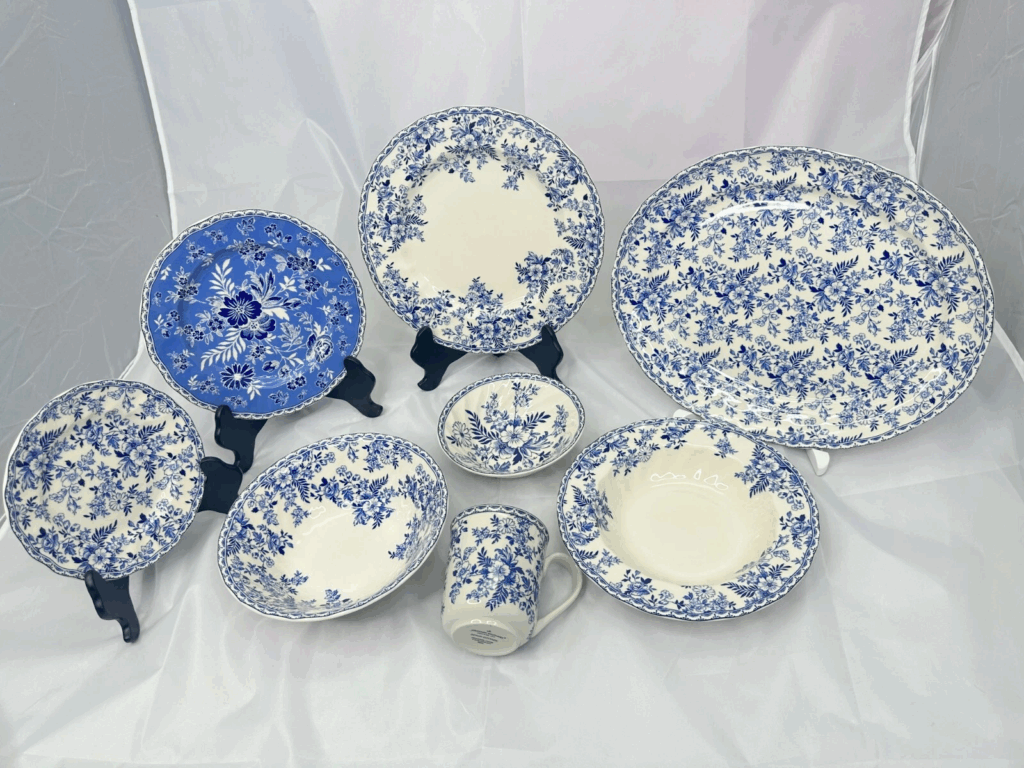
Devon Cottage was introduced in the 1960s and features blue flowers and foliage. The crisp blue design against a white background gave it a fresh look. It was especially common in tea sets and dinnerware. The pattern was well-loved for its simplicity and charm. Plates usually sell for $10 to $20 today.
Collectors appreciate Devon Cottage for its versatile style. Teapots and serving pieces can reach values of $100 or more. It was often gifted for weddings and anniversaries. Many enjoy how it pairs well with other blue and white tableware. It remains a steady choice for collectors of floral china.
Johnson Brothers Rose Bouquet
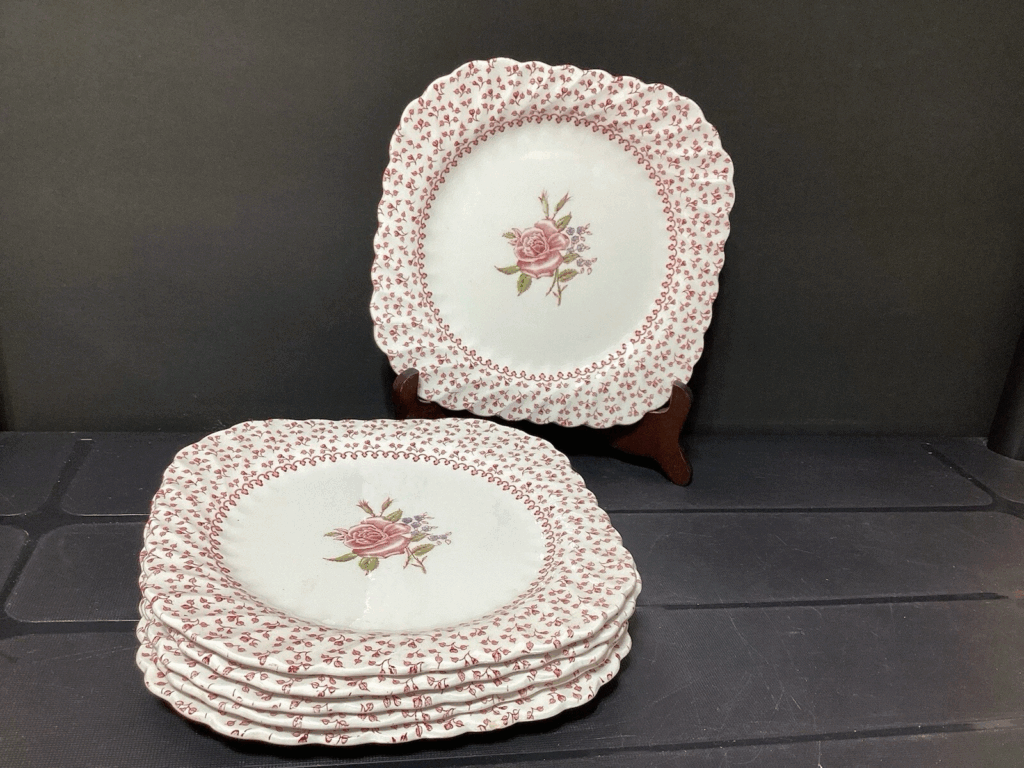
Rose Bouquet was released in the 1930s and features pink and red roses. The design is simple yet elegant, often paired with gold trim. It was popular for tea sets and formal dinners. Its floral design made it one of the most charming Johnson Brothers patterns. A dinner plate today usually sells for $12 to $25.
Although it is not as common as some other patterns, collectors value its unique charm. Complete sets can bring higher amounts, sometimes $150 or more. Rose Bouquet is especially sought after in excellent condition. Many admire it for its delicate design and timeless beauty. It is a lovely representation of Johnson Brothers floral work.
The legacy of Johnson Brothers lives on through patterns that have stood the test of time. Their designs bring elegance to both everyday dining and special occasions. Many collectors value these pieces for their beauty, versatility, and historical importance.
This article originally appeared on Avocadu.
